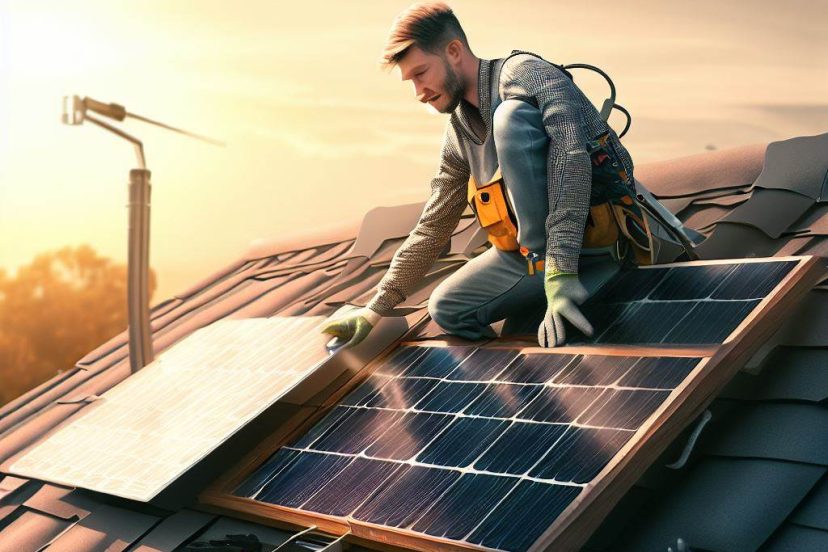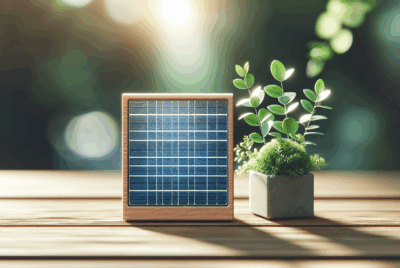Solar Attic Fan: Harnessing the Power of the Sun to Cool Your Attic
As an Amazon Associate, I earn from qualifying purchases, at no additional cost to you. Disclaimer
Introduction
Imagine having a simple, efficient, and environmentally-friendly solution to keep your attic cool and reduce your dependency on electricity. With a solar attic fan, you can achieve just that. In this article, I will guide you through the benefits of using solar attic fans, offer tips for choosing the right one, explain the installation process, provide maintenance advice, and share additional energy-saving tips. By the end, you’ll have all the information you need to make an informed decision and enjoy the benefits of a solar-powered attic ventilation system.
What is a Solar Attic Fan?
Before we dive into the benefits and details, let’s understand what a solar attic fan actually is. It’s a ventilation system that uses solar energy to power a fan, which expels hot air from your attic and draws in cooler air from the outside. This continuous airflow helps regulate the temperature inside your attic, preventing the buildup of excess heat and moisture.
Benefits of Using a Solar Attic Fan
Energy Efficiency and Cost Savings
One of the primary benefits of a solar attic fan is its energy efficiency. Since it runs on solar power, it doesn’t rely on electricity from the grid. By utilizing the sun’s energy, you can significantly reduce your energy consumption and lower your electricity bills. In fact, solar attic fans are known to save homeowners up to 30% on their cooling costs.
Eco-Friendly Solution
By choosing a solar attic fan, you contribute to a greener future. Solar power is a clean and renewable energy source, emitting no harmful greenhouse gases or pollutants. By reducing your dependency on electricity, you actively reduce your carbon footprint and help combat climate change.
Improved Attic Ventilation
Proper attic ventilation is crucial for maintaining a healthy and functional home. A solar attic fan improves ventilation by removing excess heat, moisture, and stale air from your attic. This prevents the growth of mold, mildew, and other harmful contaminants, prolonging the lifespan of your roof and reducing the risk of structural damage.
Extended Roof Lifespan
Excessive heat buildup in your attic can have a negative impact on your roof’s lifespan. By investing in a solar attic fan, you can help regulate the temperature and minimize the strain on your roofing materials. This can lead to a longer-lasting roof, reducing the need for costly repairs or replacements.
Quiet and Low-Maintenance Operation
Solar attic fans are designed to operate quietly, ensuring minimal noise disturbance. Additionally, they require little to no maintenance. With no electrical connections or moving parts other than the fan, you can enjoy peace of mind knowing that your solar attic fan will continue to operate efficiently without the need for constant upkeep.
Choosing the Right Solar Attic Fan
Now that you understand the benefits, let’s discuss how to choose the right solar attic fan for your home. Consider the following factors:
Attic Size and Fan Capacity
The first step is to assess the size of your attic and determine the appropriate fan capacity. Measure the square footage of your attic space and consult the manufacturer’s specifications to ensure you choose a fan with adequate ventilation power.
Quality and Durability
Invest in a high-quality fan that’s built to withstand various weather conditions. Look for models with durable materials, such as corrosion-resistant metal and tempered glass, to ensure longevity.
Warranty and Certifications
Check for warranties and certifications when making your selection. A reputable manufacturer will provide warranty coverage for their product, indicating their confidence in its performance and reliability. Additionally, certifications like the Solar Rating and Certification Corporation (SRCC) ensure that the fan meets industry standards for efficiency.
Additional Features
Consider any additional features that may enhance the functionality of the fan. Some models come with adjustable thermostats or built-in humidity sensors, allowing for automatic activation and precise control over attic ventilation.
Click Here for Solar Attic Fans to Save Energy Costs
Installation Process
Now that you’ve chosen the right solar attic fan, it’s time to install it. While it’s recommended to hire a professional for the installation, if you’re comfortable working with tools and have some DIY experience, you can install it yourself. Here’s a step-by-step guide:
Step 1: Gather the Necessary Tools
Before you begin, make sure you have all the required tools, including a ladder, drill, screwdriver, and silicone sealant. Refer to the manufacturer’s instructions for a complete list.
Step 2: Choose the Installation Location
Select the optimal location for your solar attic fan. It should be installed on the highest point of your roof, preferably on the south-facing side to maximize sun exposure. Ensure there are no obstructions like trees or nearby structures that could cast shadows on the fan.
Step 3: Mark the Fan’s Position
Place the solar attic fan on the chosen location and mark the positions for the mounting brackets. Use a level to ensure the fan will be installed properly.
Step 4: Install the Mounting Brackets
Attach the mounting brackets securely to the roof surface using the appropriate screws or bolts. Make sure they are aligned properly and level.
Step 5: Mount the Solar Attic Fan
Carefully mount the solar attic fan onto the installed brackets. Follow the manufacturer’s instructions to ensure proper alignment and secure attachment.
Step 6: Connect the Wiring
Connect the wiring according to the manufacturer’s instructions. If you’re unsure or uncomfortable with electrical work, it’s best to hire a professional electrician to handle this step.
Step 7: Test the Fan
After the installation is complete, test the solar attic fan to ensure it’s functioning correctly. Observe the fan’s operation and make any necessary adjustments.
Positioning the Solar Attic Fan
To maximize the efficiency of your solar attic fan, proper positioning is essential. Here are some tips to help you achieve optimal results:
Roof Angle and Sun Exposure
If your roof has a steep angle, position the solar attic fan near the peak to capture the most sunlight. For roofs with a shallower angle, place the fan lower on the roof to maximize sun exposure.
Avoid Shading
Ensure that the solar attic fan is not shaded by nearby trees, buildings, or other obstructions. Direct sunlight is crucial for its optimal operation and energy production.
Airflow Direction
Consider the prevailing winds in your area and position the solar attic fan on the leeward side of your roof. This will help maximize the fan’s effectiveness in expelling hot air and drawing in cooler air.
Maintenance and Care
To keep your solar attic fan running smoothly and efficiently, regular maintenance is required. Here are some essential maintenance tips:
Clean the Solar Panel
Dust, dirt, and debris can accumulate on the solar panel over time, reducing its efficiency. Clean the panel periodically with a soft cloth or sponge and mild soapy water to remove any buildup.
Inspect for Damage
Regularly inspect the fan and its components for any signs of damage or wear. Check for loose connections, damaged wiring, or cracks in the housing. If you notice any issues, contact a professional for repairs.
Clear Debris from Vent Openings
Ensure that the vent openings are clear from any obstructions, such as leaves or debris. This will allow for proper airflow and ventilation.
Check for Proper Functioning
Occasionally, test the fan’s operation to ensure it’s working as intended. Listen for any unusual noises or vibrations and monitor its performance. If you notice any significant changes, consult a professional for assistance.
Maximizing Efficiency
To optimize the efficiency of your fan, consider the following tips:
Time of Day
Solar attic fans are most effective during the peak hours of sunlight. Ensure that it is positioned to receive maximum sunlight during these times for optimal energy production.
Regular Monitoring
Keep an eye on your attic temperature and humidity levels. Monitor the fan’s performance and adjust settings if necessary to maintain a comfortable and well-ventilated attic space.
Insulation and Sealing
Improve the overall efficiency of your attic by ensuring it is properly insulated and sealed. Adequate insulation will reduce heat transfer and help the fan work more effectively.
Additional Energy-Saving Tips
In addition to using a solar attic fan, here are a few more tips to save energy and reduce your dependency on electricity:
Use Energy-Efficient Appliances
Invest in energy-efficient appliances for your home, such as ENERGY STAR-rated refrigerators, air conditioners, and light bulbs. These appliances consume less energy, leading to long-term savings on your electricity bills.
Install Programmable Thermostats
Programmable thermostats allow you to set specific temperature schedules for your home. By adjusting temperatures when you’re away or asleep, you can reduce energy consumption and save on cooling costs.
Implement Proper Insulation
Ensure your home is well-insulated to prevent the loss or gain of heat. Insulate your walls, floors, and attic properly to maintain a comfortable indoor temperature and minimize the need for excessive cooling or heating.
Embrace Natural Lighting
Make the most of natural lighting during the day by opening curtains and blinds. Utilizing natural light reduces the need for artificial lighting, saving energy and creating a pleasant ambiance.
Practice Energy-Efficient Habits
Simple habits like turning off lights when not in use, unplugging electronics when not needed, and using natural ventilation instead of air conditioning can make a significant difference in your energy consumption.
Conclusion
By harnessing the power of the sun, a solar attic fan provides an efficient and eco-friendly solution for cooling your attic space. With the numerous benefits it offers, such as energy savings, improved ventilation, and extended roof lifespan, investing in one is a wise decision for any homeowner. Remember to make your choice based on your attic size, ensure proper installation and positioning, and follow regular maintenance routines to maximize its efficiency. By incorporating additional energy-saving tips, you can further reduce your dependency on electricity and contribute to a greener future.
Frequently Asked Questions (FAQs)
1: How long does a solar attic fan last?
Solar attic fans are built to last for many years. On average, you can expect a well-maintained solar attic fan to operate effectively for 20 to 25 years.
2: Can a solar attic fan work at night?
No, it relies on sunlight to generate power. They are designed to operate during daylight hours when solar energy is available. However, some models may include a backup battery option to continue running during low-light conditions.
3: Is a solar attic fan noisy?
It is designed to operate quietly. While there may be a low humming sound during operation, it is generally not loud or disruptive.
4: Do solar attic fans require direct sunlight?
It requires direct sunlight to generate power. They are most effective when positioned in areas that receive ample sunlight throughout the day.
5: Can I install a solar attic fan myself?
While it is possible to install one yourself, it’s recommended to hire a professional for optimal installation. Professional installers have the expertise and tools to ensure proper placement, wiring, and sealing, maximizing the fan’s efficiency and longevity.





